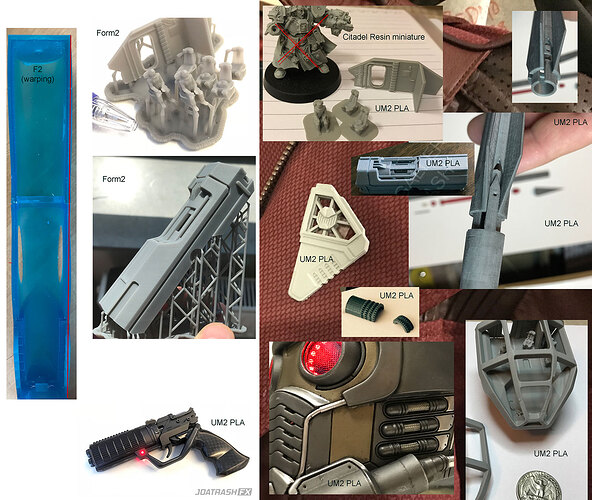I have used an Ultimaker 2 for several years, and in that time been able to reliably challenge the detail of resin, SLA and SLS printers. Certainly, even a 25 micron nozzle with melting plastic can’t beat a laser when it comes to the smallest details, but you can go VERY far with them.
As for tolerances- if you know how your plastic behaves and have a finely tuned machine, you can achieve great results, within a hundred microns or so.
In comparison, I’ve had my Form 2 for about two months. After having run about a few liters of Tough and Grey Standard resins, I am impressed by the detail it can capture, but simultaneously very underwhelmed by how horrendously bad some tolerances are in terms of warping. The Tough resin especially, which I need to be my go-to material due to the durability, is particularly bad for a material that targets “engineers” needing to make functional prototypes. And I know enough about print orientations and design aspects to lead me to suspect it’s either a flaw in my machine (support ticket incoming) or an inherent weakness of the process as it currently stands, that has been greatly underreported. I’ve had more warped and unaligned parts in 2 months of printing with the F2 that I had in 4 years of printing PLA with the Ultimaker!
As for durability- printing PLA correctly, you will not have issues with delamination of layers. PLA will beat the standard resins any day when it comes to durability- especially at thinner levels. (I’ve made hollow parts that can withstand the weight of a full grown adult.) The Tough however, does hold its own when it comes to strength. The weakest link when it comes to PLA is that thin parts will start to deform at around 60+ degrees Celsius.
I’m attaching a collage of parts, some of them showing high-precision parts. Most of them are FDM as the pile of Form 2 parts I have are not yet ready for photographing, but you can at least compare a couple of the same parts in FDM vs resin.
If cost is an issue, resins cost 10-20X more than the best PLA does. It’s expensive experimenting on a Formlabs machine!
In the end, I would say that if you are going to do super high-detail parts, need a VERY smooth surface without doing any post-processing (for painting), under 10cm in size, look at getting a Form printer. If you’re doing slightly larger mechanical parts that just need to function, look into a high-end (i.e. Ultimaker) FDM printer.COLLAGE|592x500
